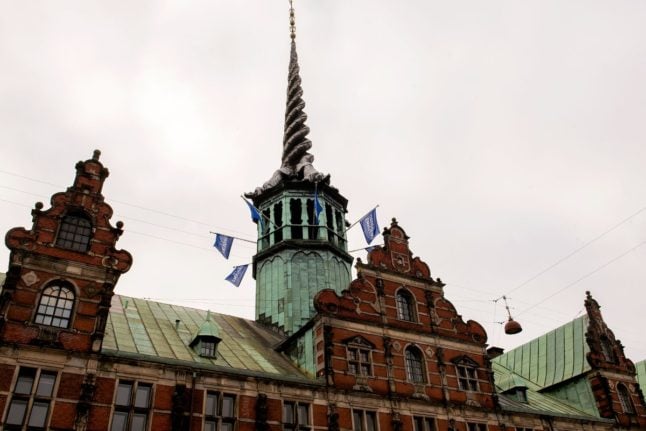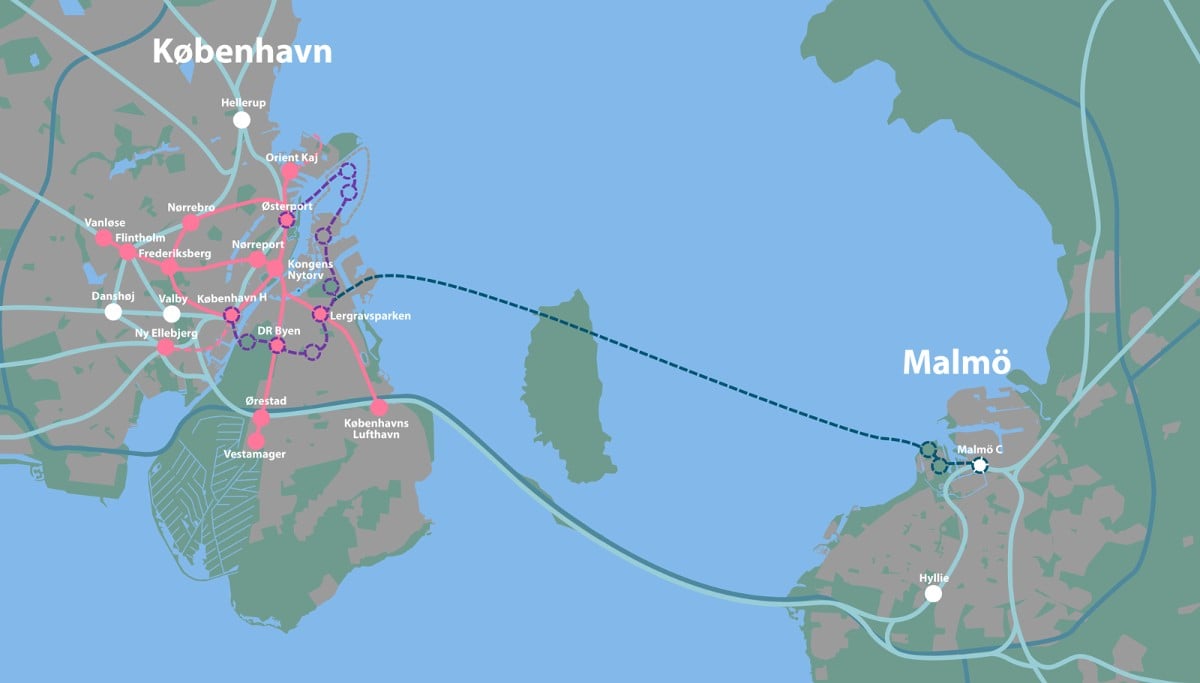When did the fire break out?
The Copenhagen fire services received the first reports about the blaze at the Børsbygningen, or Exchange building, shortly after 7.30am, when a fire alarm triggered an automatic alert. By 8am, the building had been fully evacuated and the fire services began the first phase of extinguishing the fire.
At around 8.30am, the buildings iconic spire collapsed. By 10.30am, the fire had spread to around half of the building and several parts of the roof had fallen in. The fire has since spread to all floors of the building.
What do we know about the fire-fighting effort?
At 9am emergency services from all over Denmark were called in to assist in battling the fire, and 30 to 40 troops from the Royal Life Guard have also been dispatched to help police cordon off the area and help out in any other way they can.
Fire services have described the building’s copper roof as acting like a lid over the fire, retaining heat and making it difficult to dampen the blaze. As a result the fire services initially concentrated on wetting the floors beneath the roof to prevent the blazing spreading downwards into the building.
The fire services have now decided to remove part of the copper roof to prevent it from obstructing fire fighting efforts.
It is likely to take 24 hours or more to fully extinguish the fire.
What was the cause of the fire?
So far, no information has been released about the cause of the fire, but the building was in the middle of extensive building work aimed to recreating its original facade, which was replaced during a now regretted renovation in the late 19th century. The fire may have broken out as a result of the ongoing activity.

Where is it and why is it such an iconic building?
The Børsbygningen was built by Christian IV, the Danish king who also built the Rundetårn Tower and the Rosenborg Castle.
It is situated right next to the Christiansborg Palace, the site of the Danish parliament, and across the water from Christianshavn, the Copenhagen district Christian founded.
Built between 1619–1640, the building is perhaps the best example of the Dutch Renaissance style so appreciated by King Christian, who wanted to imitate what he had seen then thriving Amsterdam.
The building’s decorative 56m spire, shaped by the tails of three dragons entwined together, has long been an important feature on the skyline of central Copenhagen.
The building continued to house the Danish stock market until 1974.
Who has been evacuated and how is traffic affected?
The Provianthus wing at Christiansborg Palace, the nearby seat of Denmark’s parliament, was completely evacuated early on Tuesday morning due to fears that it could be affected by flames and smoke.
The wing houses the parliament’s administrative division, the reading room for the Danish National Archives, and the offices of several MPs.
All meetings and hearings at the parliament have been cancelled with all employees being told to stay at home.
The police cordoned off all surrounding streets on Tuesday morning, leading to delays and diversions of some bus lines in inner Copenhagen.
What Danish national heritage has been lost?
As well as the building’s exterior, with its iconic dragon-tail spire, the Stock Exchange also contained many historic artworks, some of them valuable.
According to the TV2 newspaper, the most significant of the paintings, “From Copenhagen Stock Exchange”, or Fra Kjøbenhavns Børs, a four-metre wide oil painting by Peder Severin Krøyer, one of the most famous of Denmark’s Skagen school of artists, painted in 1895, has been rescued.





 Please whitelist us to continue reading.
Please whitelist us to continue reading.
Member comments